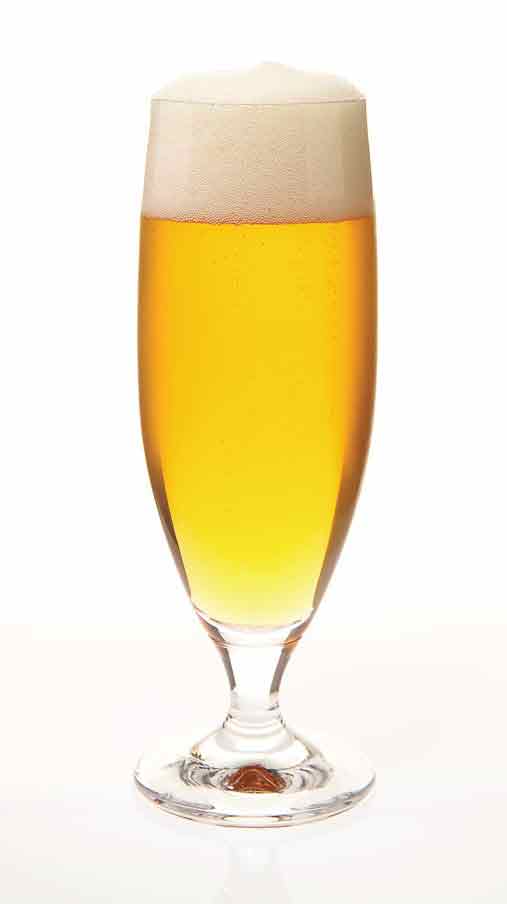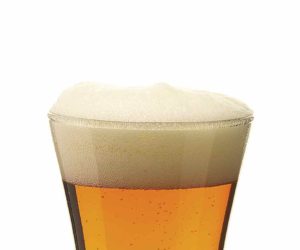American-Style Lager
American-Style Lager
(5 gallons/19 L, all-grain)
OG = 1.046 FG = 1.008
IBU = 15 SRM = 2–4 ABV = 4.9%
Ingredients
7 lbs. (3.2 kg) 2-row pale malt
2.5 lbs. (1.1 kg) raw rice or corn
0.25 lb. (113 g) acidulated malt
12 AAU Mt. Hood hops (60 min.) (2 oz./56 g at 6% alpha acids)
0.5 oz. (14 g) Mt. Hood hops (dry hop) (optional)
White Labs WLP080 (Cream Ale Yeast Blend) or a packet each of SafAle S-04 and SafLager W-34/70 yeast
3⁄4 cup corn sugar (if priming)
Step by step
Mill the 2-row malt and remove half a pound (0.23 kg) for use in the cereal mash process; set the rest aside for now. Crush the raw grain and add it plus the half pound (0.23 kg) of 2-row you set aside into a muslin or nylon mesh bag and secure the top.
Heat 1.25 gallons (5 L) of water (4:1 water-to-grist) in a large pot to the proper strike temperature for a 158 °F (70 °C) mash rest. Add the bag(s) of grain to the pot and rest at 158 °F (70 °C) for 15–30 minutes (this is also an opportunity to use White Labs Ultra-Ferm if you choose). It is important to make every effort to keep the grain off the bottom of the pot to avoid scorching. This can be achieved by suspending the bags with clips on the rim of the pot or good old-fashioned constant stirring.
After the initial rest, bring the pot up to boiling for no less than 30 minutes. When the pot begins to boil, start your regular mash-in regimen with the remaining milled 2-row and acidulated malt in a separate pot at a 3:1 water-to-grist (approximately 3.5 gallons/13 L). Target an initial mash temperature around 130 °F (54 °C). As the cereal mash is done boiling, if you timed things up correctly, you are ready to raise the temperature of your larger mash to your desired saccharification temperature. Carefully add the boiled grain and liquid into your larger mash; add additional hot liquor or heat if necessary to raise the temperature to the desired temperature. From this point, vorlauf and sparge as you normally would.
Boil the wort for 60 minutes, adding hops at the beginning of the boil. Add kettle finings like Irish moss or Whirlfloc, if desired, with 15 minutes left in the boil. Chill wort to 50 °F (10 °C), aerate thoroughly, then pitch yeast. Ferment at 50 °F (10 °C) for ten days. On day ten, allow the temperature to rise for another 7 days until it reaches no higher than 62 °F (17 °C). At this point, rack the beer into another carboy and allow another 3 weeks at 45 °F (7 °C) before packaging. You may also add an optional dry hop during the transfer to secondary, but tread lightly so as to not conceal the grain’s flavor.
An optional alternative approach to this or other similar recipes would substitute koji-fermented grain in for the raw grain and omit the cereal mash process. While brew day is made easier, the steps to produce the koji-fermented grains are meticulous, time-consuming, and require ample foresight. Also, be prepared for quite a different flavor profile if you choose this method, especially depending on your koji spore of choice; my favorite koji for brewing is any used in sake production.
Written by Ryan Coker




